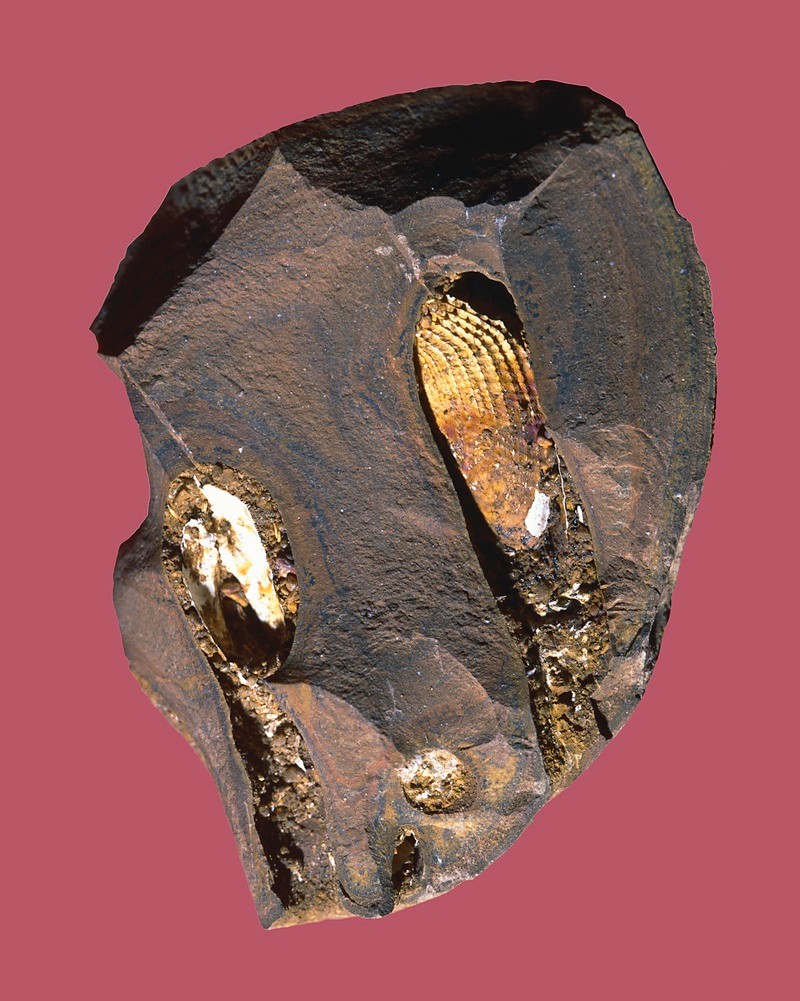| P number: | P549448 |
|---|---|
| Caption: | Pholas, a fossil bivalve. |
| Description: | Bivalves adopted a number of protective strategies. Some adopted a burrowing mode of life, others lived in fissures, some were able to swim away from danger and yet others relied on heavily calcified shells to protect them from predators. The illustrated specimen of Pholas, which lived during the Pleistocene times (less than two million years ago), is a rock-boring bivalve and is seen here preserved in its burrow. Not surprisingly, as Pholas lived in a tube-like burrow, its shell is elongate and almost cylindrical. Its shell gapes open and the markings on the interior of each valve (the deep pallial sinus) indicates it had a long siphon stretching to the surface. The surfaces of the valves have spiny ridges, especially at the front. Bivalves are molluscs that first evolved over 500 million years ago during the middle of the Cambrian period. They flourished during the Mesozoic (particularly the Jurassic and Cretaceous) and in the Cainozoic eras. They are abundant in the modern seas and dead shells are often found in the beach sands around the world. The early bivalves are associated with marine palaeoenvironments, but they later colonised brackish and fresh waters. As they are so common in modern times, their mode of life can be extrapolated back into the geological past and used in palaeoenvironmental reconstructions. |
| Photographer: | Unknown |
| Copyright statement: | NERC |
| Orientation: | Portrait |
| Size: | 442.75 KB; 800 x 1001 pixels; 68 x 85 mm (print at 300 DPI); 212 x 265 mm (screen at 96 DPI); |
| Average Rating: | Not yet rated |
| Categories: | Best of BGS Images/ Fossils |
Reviews
There is currently no feedback

